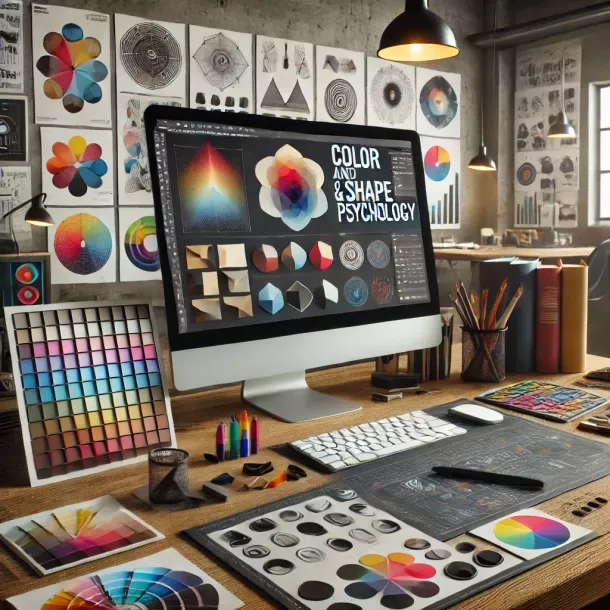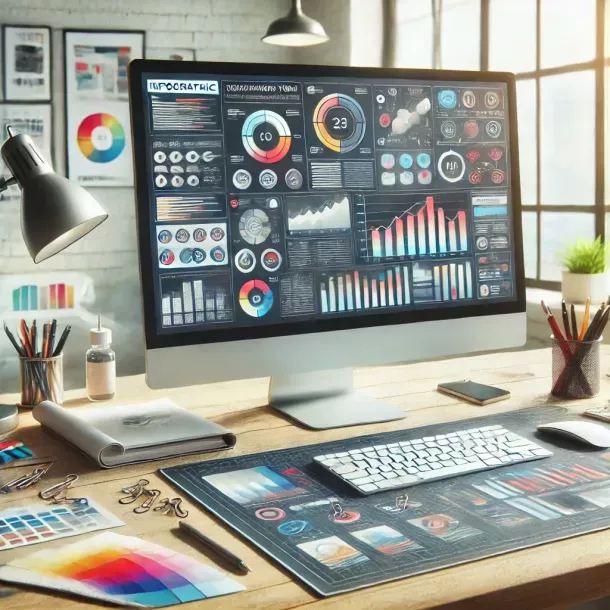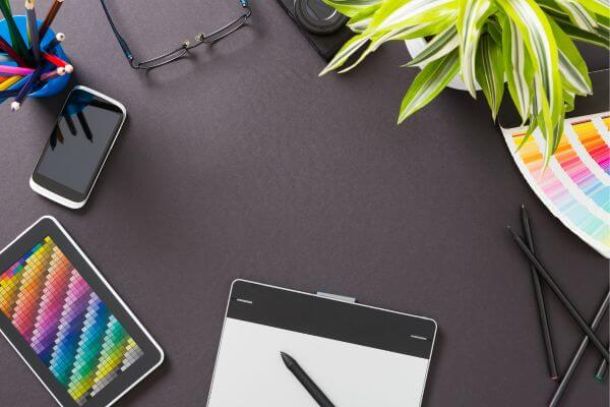Tips to Develop Your Creativity as a Designer
Tips to Develop Your Creativity as a Designer
Creativity is the lifeblood of design. As a designer, cultivating and enhancing your creative abilities is crucial to staying innovative and producing impactful work. In this article, we will explore practical tips and strategies to help you nurture and develop your creativity. Whether you’re experiencing a creative block or seeking ways to enhance your design process, these tips will inspire you to unlock your full creative potential.
Embrace a Curious Mindset
Curiosity is the fuel for creativity. Cultivate a genuine curiosity about the world around you. Explore different art forms, design styles, and diverse cultural influences. Engage in hobbies, travel, read books, visit art galleries – anything that expands your horizons and exposes you to new ideas. By staying curious, you’ll keep your mind open to inspiration and foster a continuous flow of creative energy.
Seek Inspiration Everywhere
Inspiration can be found in unexpected places. Look beyond the confines of the design world for fresh ideas. Find inspiration in nature, architecture, fashion, music, and everyday objects. Train your mind to observe and appreciate the beauty and design elements present in your surroundings. Keeping an inspiration journal or mood board can help you capture and revisit these sources of inspiration when needed.
Step Outside Your Comfort Zone
Comfort zones can limit your creative growth. Push yourself to explore new design styles, experiment with different tools or techniques, and take on projects that challenge you. Embrace the discomfort that comes with venturing into uncharted territory, as it often leads to breakthroughs and new creative perspectives.
Practice Mindfulness and Mind-Wandering
Mindfulness techniques can help quiet your mind, reduce distractions, and create a focused space for creativity. Set aside dedicated time for reflection, meditation, or mindfulness exercises. Allow your mind to wander freely, as daydreaming and mental restlessness often lead to unexpected creative connections and ideas.
Collaborate and Network
Collaborating with other designers and creative professionals can stimulate your creativity. Seek out opportunities to work on collaborative projects, join design communities, or attend design meetups and conferences. Engage in discussions, share ideas, and learn from others. Collaboration not only exposes you to new perspectives but also sparks fresh ideas and fosters a supportive creative environment.
Establish a Design Ritual
Design rituals can help you get into a focused and creative mindset. Create a dedicated workspace that inspires you, curate a playlist of music that fuels your creativity, or establish a pre-design routine that signals to your brain that it’s time to dive into the creative process. By establishing a design ritual, you create a conducive environment for your creativity to thrive.
Embrace Constraints
Constraints can breed creativity. Instead of viewing limitations as obstacles, see them as opportunities for innovative solutions. Whether it’s a limited color palette, a tight deadline, or specific client requirements, embracing constraints forces you to think outside the box and find unique approaches to design problems.
Take Breaks and Embrace Rest
Designers often overlook the importance of rest and breaks. However, downtime is essential for rejuvenating your mind and allowing new ideas to incubate. Take regular breaks during your workday, engage in activities that relax and recharge you, and prioritize a healthy work-life balance. You’ll find that a rested mind is more receptive to creative inspiration.
Keep a Sketchbook
A sketchbook is a designer’s best friend. Carry a sketchbook with you at all times and use it to jot down ideas, sketches, and random thoughts. It’s a safe space for experimentation, free-flowing ideation, and visual exploration. Refer back to your sketchbook when you’re in need of inspiration or looking to develop ideas further.
Creative Exercises and Challenges
Engaging in creative exercises and challenges can help stimulate your imagination and push your creative boundaries. Here are a few activities you can try:
- Word Association: Choose a random word and brainstorm related words, ideas, and visual representations. Allow your mind to make unexpected connections and explore different possibilities.
- Visual Collage: Gather images, textures, and materials that inspire you. Create a collage that combines these elements into a visually cohesive composition. This exercise encourages you to experiment with juxtaposition and explore new visual narratives.
- Design Prompts: Seek out design prompts or create your own. These prompts can range from creating a logo for a fictional company to designing an app interface for a specific purpose. By tackling diverse design challenges, you’ll expand your skill set and creative problem-solving abilities.
- Limitation Exercises: Set limitations for your design process, such as restricting yourself to a monochromatic color scheme or using only geometric shapes. Working within these limitations forces you to think creatively and find unique solutions within defined boundaries.
Embrace Failure and Learn from Mistakes
Fear of failure can stifle creativity. Embrace the idea that mistakes and failures are valuable learning opportunities. Allow yourself to take risks, try new approaches, and learn from the outcomes—both successful and unsuccessful. Understanding that failure is a natural part of the creative process will empower you to grow and refine your skills.
Stay Organized and Document Your Ideas
A cluttered workspace and scattered ideas can hinder your creative flow. Establish organizational systems that work for you, whether it’s digital folders, project management tools, or physical binders. Keep track of your ideas, sketches, and design iterations, so you can revisit and build upon them in the future.
Take Advantage of Technology
Technology offers a myriad of tools and resources for designers. Stay updated on design software, digital platforms, and online communities relevant to your field. Experiment with new tools and explore how they can enhance your creative process. Technology can provide innovative ways to visualize concepts, collaborate with others, and streamline your workflow.
Continuous Learning and Skill Development
Design is an ever-evolving field, and staying abreast of new trends, techniques, and technologies is essential. Invest in your professional development through online courses, workshops, tutorials, and design publications. By continuously expanding your skill set and staying curious, you’ll remain at the forefront of the design industry.
Reflect and Iterate
Periodically reflect on your design projects and processes. Analyze what worked well, what could be improved, and how you can refine your approach. Embrace a mindset of constant iteration and improvement. By learning from your experiences and applying those insights to future projects, you’ll continue to evolve and grow as a designer.
Engage in Creative Communities
Connecting with fellow designers and joining creative communities can provide valuable support and inspiration. Seek out design forums, social media groups, or local design meetups. Engaging in conversations, sharing ideas, and receiving feedback from like-minded individuals can fuel your creativity and expose you to different perspectives.
Experiment with Different Mediums
Don’t limit yourself to a single design medium. Explore different art forms, such as painting, photography, or sculpture. Experimenting with different mediums allows you to approach design from new angles, learn new techniques, and apply diverse creative processes. Cross-pollination between different art forms often leads to innovative and unique design solutions.
Practice Creative Exercises Regularly
Consistency is key when it comes to nurturing your creativity. Set aside dedicated time each day or week for creative exercises. Engage in activities like sketching, doodling, brainstorming, or even freewriting. These exercises keep your creative muscles active, sharpen your problem-solving skills, and help overcome creative blocks.
Embrace the Power of Divergent Thinking
Divergent thinking is the ability to generate multiple solutions or ideas for a single problem. Practice divergent thinking by intentionally generating a large number of ideas without judgment. This opens up possibilities and encourages you to explore unconventional approaches. Quantity breeds quality, and the more ideas you generate, the greater the chance of discovering truly innovative concepts.
Take Time for Self-Reflection
In the hustle and bustle of the design process, it’s essential to carve out moments for self-reflection. Set aside time to review your past work, analyze your design choices, and assess what worked well and what could be improved. Self-reflection fosters self-awareness and allows you to refine your creative process, identify patterns, and make intentional design decisions.
Find Your Creative Environment
Everyone has their own ideal environment for creativity. Some thrive in quiet solitude, while others draw inspiration from bustling coffee shops or collaborative spaces. Discover the setting that enhances your creativity and create a space that reflects your unique style and preferences. Surround yourself with objects, colors, and stimuli that inspire and energize your creative flow.
Embrace Feedback and Critique
Feedback is a valuable tool for growth as a designer. Seek constructive criticism from trusted peers, mentors, or design communities. Embrace feedback as an opportunity to refine your work and expand your perspective. Actively seek out critique, and be open to different viewpoints. Constructive feedback helps you push boundaries, see blind spots, and elevate the quality of your designs.
Cultivate Patience and Perseverance
Creativity takes time and effort. Embrace the journey and understand that not every idea will be a masterpiece. Be patient with yourself and allow the creative process to unfold naturally. Persevere through challenges and setbacks, knowing that breakthroughs often come after moments of struggle. Trust in your abilities and keep pushing forward, even when faced with creative obstacles.
Celebrate Your Unique Voice
As a designer, your unique perspective and voice are your greatest assets. Embrace your individuality and let it shine through your designs. Don’t be afraid to take risks and challenge conventions. Celebrate your personal style and infuse your work with your passions, interests, and values. Authenticity and originality will set your designs apart and resonate with others.
Conclusion
Developing your creativity as a designer is an ongoing and personal journey. By embracing curiosity, seeking inspiration, collaborating, and engaging in creative exercises, you can continuously nurture and expand your creative abilities. Remember to reflect on your work, embrace feedback, and celebrate your unique voice.


